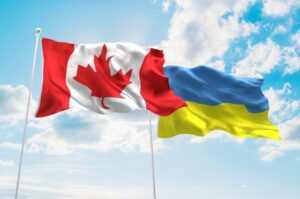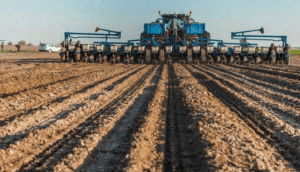
Finnish President Sauli Niinistö in a telephone conversation with Russian President Vladimir Putin announced that Finland would decide to apply for NATO membership in the coming days, the press service of the President of Finland reported.
“President Niinistö told President Putin how fundamentally the security situation in Finland had been changed by Russia’s demands at the end of 2021 to prevent countries from joining NATO and Russia’s massive invasion of Ukraine in February 2022. President Niinistö announced that Finland would decide in the coming days to apply for NATO membership,” the press release said.
President Niinistö noted that already during their first meeting in 2012, he told Putin that every independent nation maximizes its security.
“This is what is happening now. By joining NATO, Finland strengthens its own security and takes responsibility. It is far from anything else. Also in the future, Finland wants to manage correctly and professionally the practical issues that arise due to the neighborhood of the Russian Federation,” the statement said.
Niinistö said that the conversation was straightforward, without tension. Also, the President of Finland reiterated his deep concern about the human suffering caused by the war Russia is waging in Ukraine.
“He also conveyed messages on securing the evacuation of civilians, transmitted earlier in the week by President Volodymyr Zelensky,” the press service reported.

During the next revision of the duties introduced back in 2001 on hot-rolled carbon and alloy steel sheet and strip from Brazil, China, India and Ukraine, Canada refused to extend the 77% duty on goods from Ukraine.
“The Tribunal reversed its ruling regarding the dumping of such goods exported or originating in Ukraine. The Tribunal found that continuing or resuming the dumping of these goods is unlikely to result in harm,” the Canadian International Trade Terminal said on the website of the Government of Canada.
With regard to products from Brazil, China and India, restrictive measures have been maintained.
“Since August 2001, duties of 77% have been imposed on hot-rolled carbon steel products originating from Ukraine in Canada, which effectively deprived our producers of an economic incentive to export their products to Canada. After 20 years, finally, Ukrainian steel products can again be exported to Canada “, – commented on this decision, Ambassador of Ukraine Yulia Kovaliv on Facebook.

More than 700,000 people have left Ukraine for Germany since the start of Russia’s special military operation at the end of February, European media reported.
According to the newspaper Welt am Sonntag, which refers to the data of the Ministry of Internal Affairs, from February 24 to May 11, a total of 727,205 people were registered in the Central Register of Foreigners of Germany, among which 93% have Ukrainian citizenship. The number of women among refugees reaches about 81%. About 40% of refugees are minors.
The newspaper points out that a significant number of these people could go to other countries of the European Union or return to Ukraine.
According to the International Organization for Migration, about six million Ukrainians have left the country since the end of February, going to neighboring countries.

At the opening of the G7 Agriculture Ministerial Conference in Stuttgart on May 13, Minister of Agrarian Policy Ministry of Ukraine Mykola Solsky proposed to discuss the creation of an influential organization of the main countries-supplies of grain in the world, responding to modern challenges and threats to food security, including from the Russian Federation.
As stated in the message of the Ministry of Agrarian Policy on Saturday, among the tasks of this organization, Ukraine sees, in particular, the establishment of maximum volumes of exports of grain crops to stabilize prices and predictability of the market, the development of a mechanism for directing excessive balances of agricultural products to the needs of the “green” sector of the economy.
In addition, this organization could apply joint restrictive measures against unfriendly actions of food importers, especially in the case of restrictive measures by third countries on the import of processed products.
Another principle introduced by the organization should be, in the opinion of Ukraine, the storage of grain residues contracted by third countries, to a large extent in producing countries.
Solsky also called on his colleagues to contribute as much as possible to lifting the blockade on the export of agricultural products from Ukraine.
“Due to the blockade of Ukrainian seaports, seven million tonnes of wheat, 14 million tonnes of corn, three million tonnes of sunflower oil and three million tonnes of sunflower cake, as well as other crops, did not enter the world market. This has already led to a record increase in prices on the world market and will inevitably lead to a global food crisis and rising inflation,” the minister said.

During the sowing season 2022, Ukraine sowed 9.9 million hectares of land with the main agricultural crops, which is 68.7% of the 14.4 million hectares planned for the current season, including 2.8 million hectares, the Ministry of Agrarian Policy and Food announced on Friday.
According to the data published on its website, as of May 12, the area under sunflower crops totaled 3.29 million hectares (66% of the 4.93 million hectares planned for 2022), corn – 3.24 million hectares (67% of 4.85 million hectares). hectares), spring barley – 918,800 hectares (89.7% of 1.02 million hectares), spring wheat – 187,500 hectares (98.8% of 189,600 hectares), oats – 156,700 hectares (95.7% of 163,600 hectares), peas – 123,900 hectares (85% of 145,700 hectares).
In addition, the sown area under potatoes is 1.01 million hectares (85.2% of 1.19 million hectares), soybeans – 728,600 hectares (58.1% of 1.25 million hectares), sugar beet – 181,400 hectares (87.7% of 206,900 hectares), spring rapeseed – 26,700 hectares (89.5% of 29,800 hectares), millet – 22,500 hectares (36.1% of 62,300 hectares), buckwheat – 12,200 hectares (14.9% of 81,600 hectares).
“The agrarians of Ukraine, in spite of everything, are sowing. As a result, almost 90% of the areas predicted for spring crops of the early group have already been sown. In Volyn, Vinnytsia, Kirovohrad and Dnipropetrovsk regions, spring wheat is sown on 10-15% more areas than last year,” the ministry said.
In addition, in 2021, winter crops were sown for the 2022 harvest on a total area of 7.7 million hectares, including 6.5 million hectares of winter wheat, 1 million hectares of barley and 0.16 million hectares of rye.

The Retail Association of Ukraine (RAU) has launched a project to create a database of Ukrainian manufacturers, designed to unite retail chains and product owners, the association’s press service reported.
According to a press release, the implementation of the project will help trading companies quickly find the right manufacturers and suppliers in Ukraine, and manufacturers will increase their ability to supply products to national networks and regional players.
The project is also designed to support the Ukrainian manufacturer to ensure its stable sales of products and, as a result, the preservation of production, jobs and filling the local and state budgets.
To join the project, a manufacturer or supplier must fill out a form, where, in particular, indicate the list of products, the possibility of organizing delivery, etc.